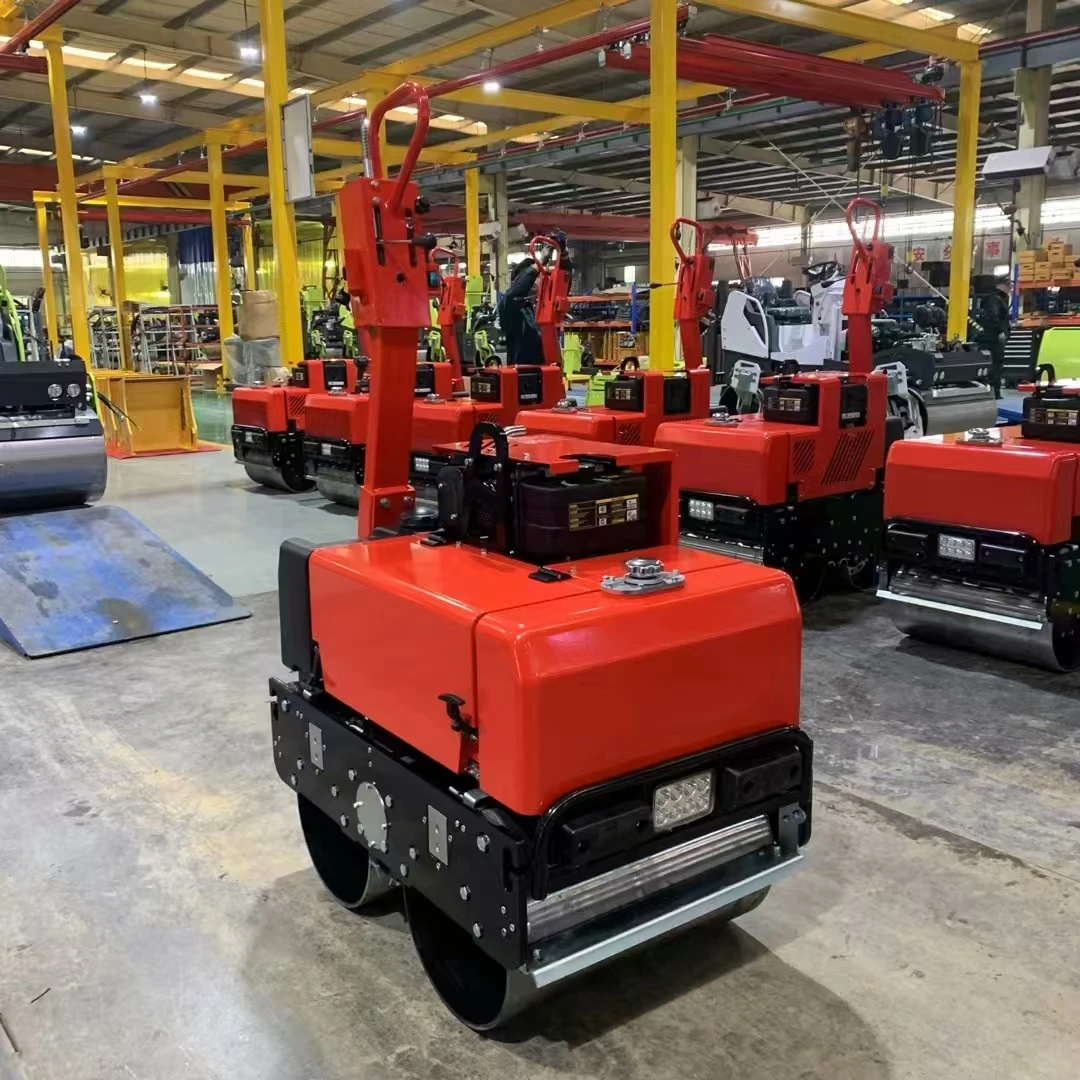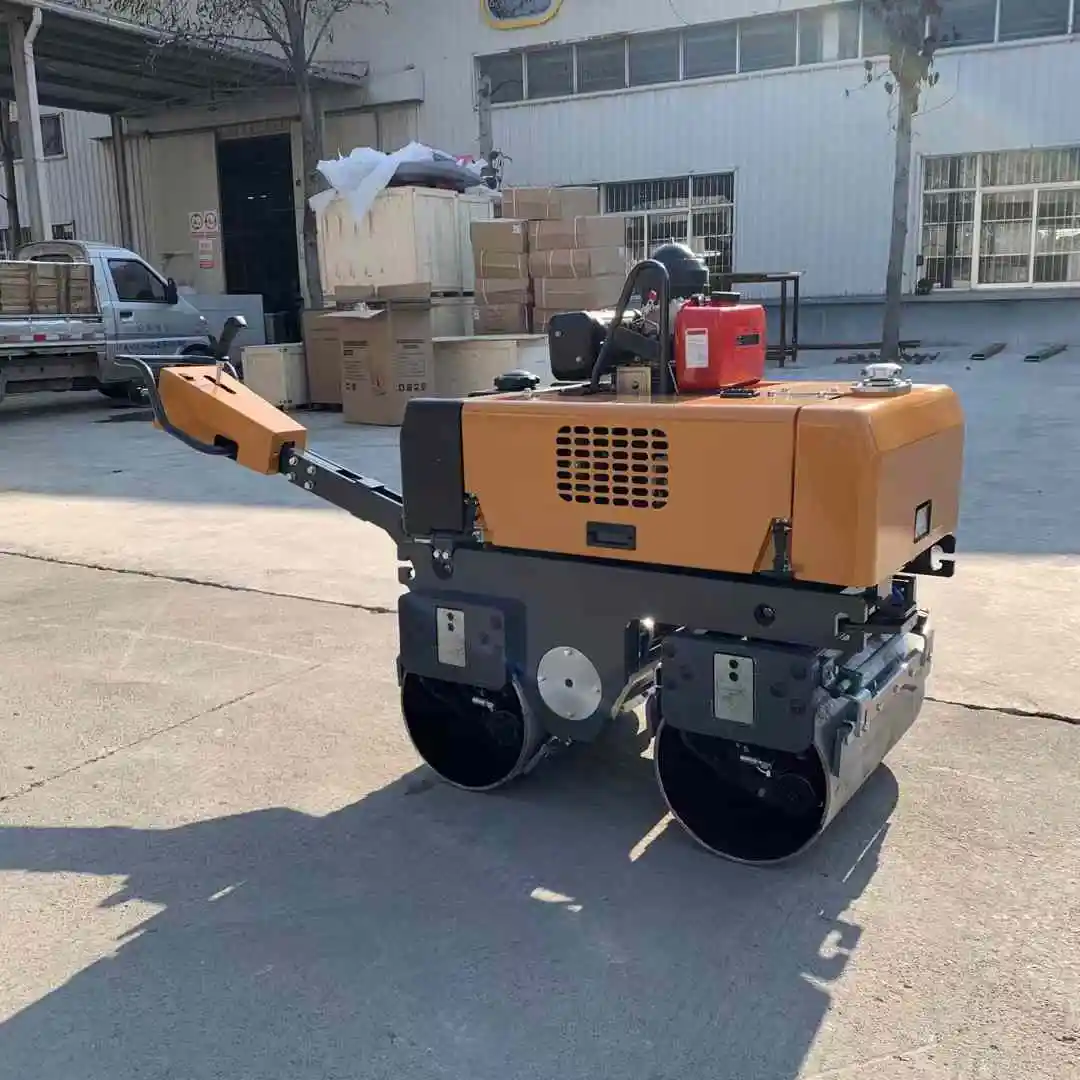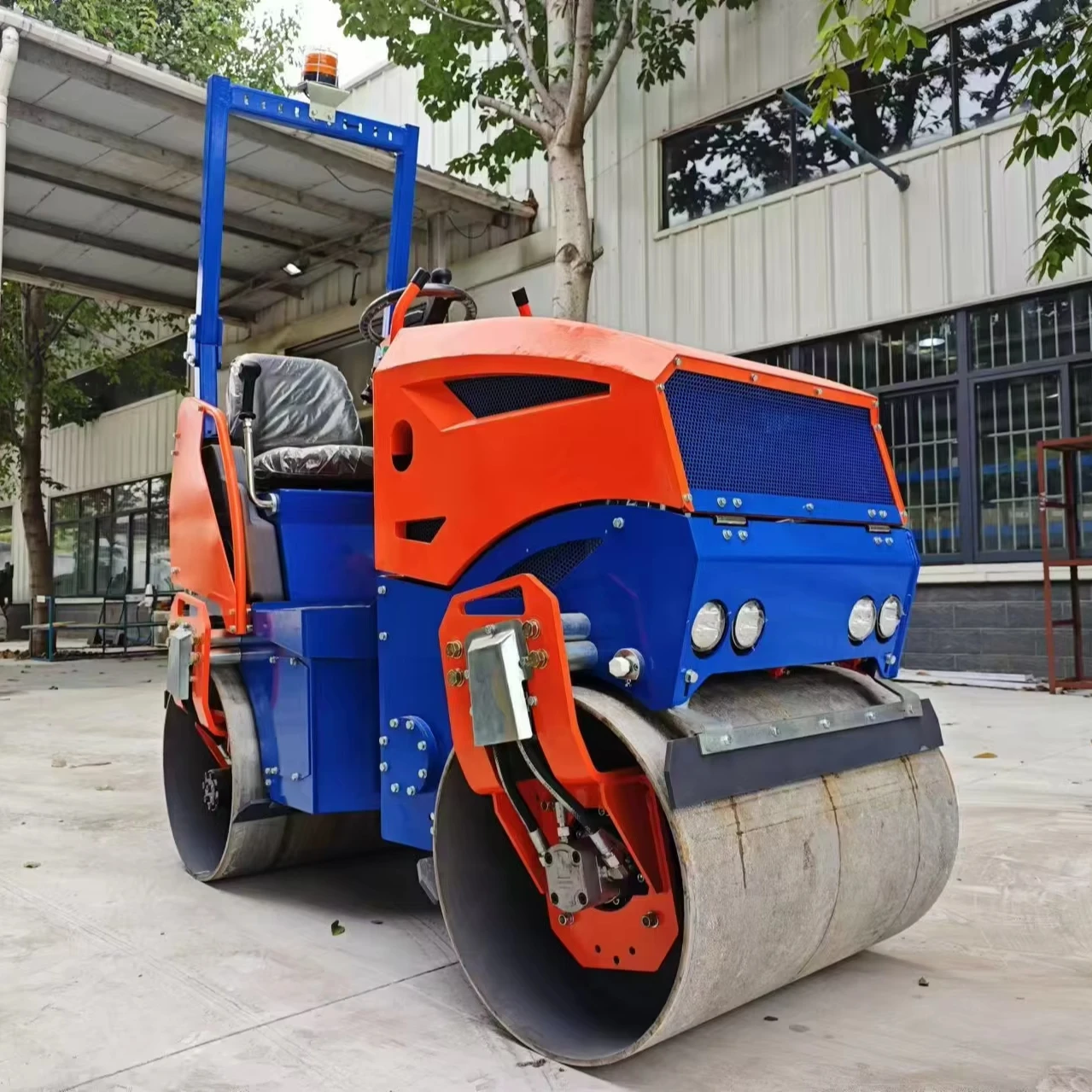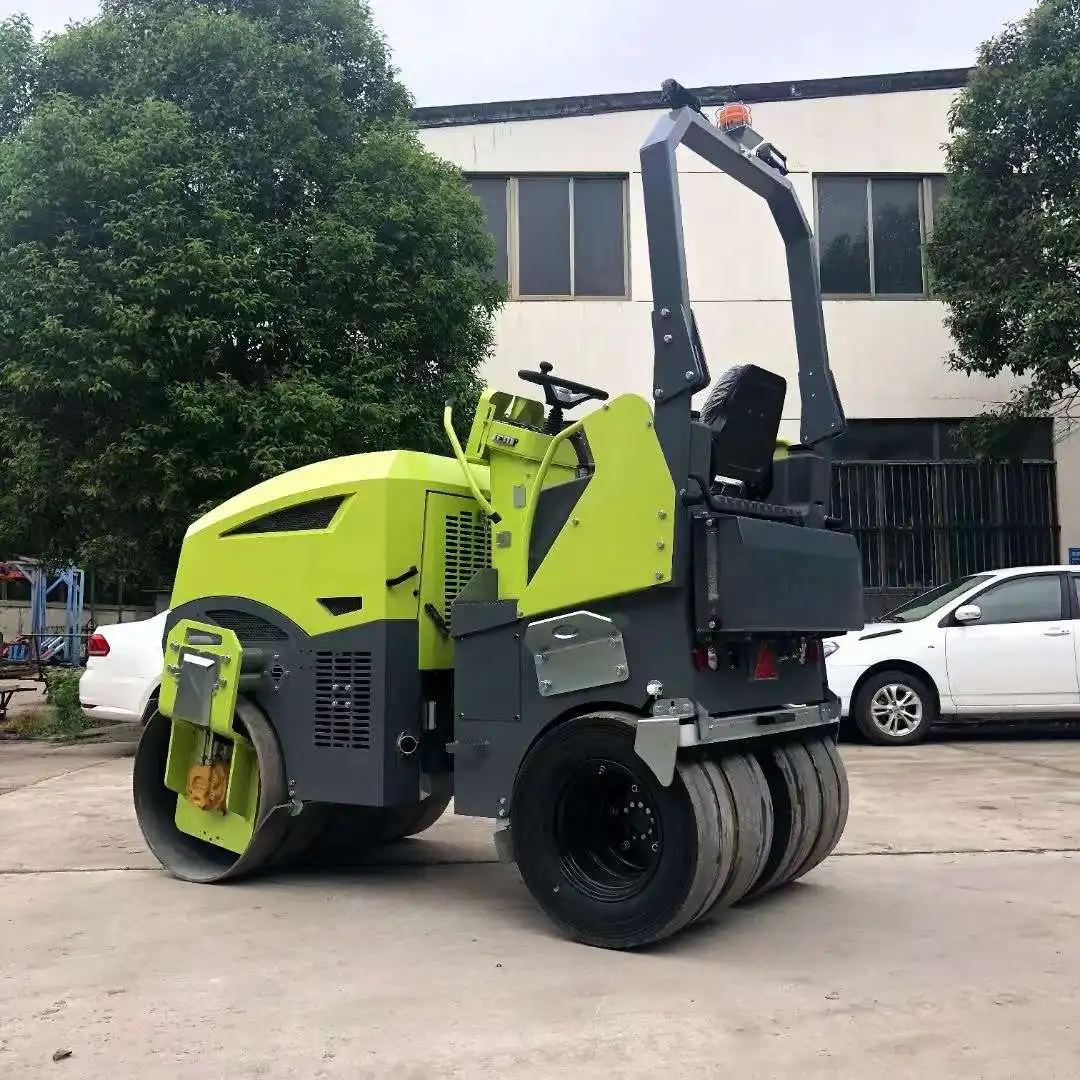Road Rollers: Trends in the Construction Equipment Industry
Current Trends in Road Roller Technology
Shift Toward Electric and Hybrid Road Rollers
The construction industry is witnessing a significant shift toward eco-friendly equipment, with electric and hybrid road rollers becoming increasingly popular. This trend is driven by growing market demand for sustainable construction practices, as they offer reduced emissions and align with environmental regulations. Additionally, electric and hybrid models provide improved operational efficiency by lowering fuel costs and offering quieter operation. According to industry reports, sales of electric road rollers are showing a consistent year-on-year increase, highlighting the growing preference for green construction alternatives. This shift not only supports environmental goals but also signifies a broader move towards innovative technologies in construction.
Integration of GPS and Telematics Systems
The integration of GPS and telematics systems in road rollers is transforming the construction landscape by offering enhanced precision and efficiency. These systems enable real-time tracking, which aids in meticulous project management and boosts operational efficiency. By leveraging telematics, companies can optimize equipment usage, minimizing idle time and reducing maintenance costs. Furthermore, studies forecast a robust growth in telematics adoption within the road roller market, driven by the rising need for data-driven decision-making. GPS-equipped road rollers facilitate improved site coordination and tracking, ensuring that construction projects are executed with greater accuracy and reduced resource waste.
Rise of Vibratory Roller Compactors
Vibratory roller compactors are becoming a preferred choice in the construction industry due to their efficiency in achieving superior soil density and surface finish. As an integral part of modern construction projects, these compactors enhance the stability and longevity of roads and pavements. Their popularity is backed by increasing market demand, as demonstrated by sales data from major construction equipment manufacturers. Vibratory rollers offer advantages such as faster compaction times and improved surface uniformity, making them invaluable for large-scale infrastructure projects. This trend signifies a broader shift towards advanced machinery that optimizes performance and meets stringent construction standards.
Key Product Innovations in Modern Road Rollers
SVH60 Full Hydraulic Road Roller: Compact Efficiency
The SVH60 Full Hydraulic Road Roller stands out in the construction equipment market due to its efficient design tailored for confined spaces. This model is equipped with advanced hydraulic systems, which significantly enhance its maneuverability, making it ideal for projects requiring precision in compact areas. Customers have lauded this machine for its versatile performance, noting how its compact size does not compromise on power or functionality. Furthermore, statistical analyses highlight how adopting full hydraulic systems leads to notable cost savings, both in fuel consumption and maintenance. Such traits ensure the SVH60 remains a valuable asset for modern construction demands.
0.8 Ton Mini Vibratory Compactor for Tight Spaces
The 0.8 Ton Mini Vibratory Compactor is engineered for environments where space is a premium. Its condensed size ensures ease of mobility, allowing operators to navigate constrained sites effectively. These compactors have revolutionized job site efficiency by enabling work in areas previously inaccessible to larger machines. A comparison of recent projects demonstrates that mini vibratory compactors notably enhance productivity by providing a more flexible and targeted compaction solution, outperforming traditional equipment in similar settings.
1.2T CE/EPA-Certified Road Roller with LED Monitoring
Designed to meet stringent regulatory requirements, the 1.2T CE/EPA-Certified Road Roller is at the forefront of compliant construction equipment. This model incorporates LED monitoring systems that provide real-time insights into operational status, ensuring superior oversight and control. Experts assert that such features considerably enhance safety and reliability, with LED systems offering unmatched monitoring accuracy. The integrated technologies in this road roller set it apart, making it a preferred choice for projects demanding compliance and precision.
4-Ton Diesel Road Roller with Advanced Hydraulics
Emphasizing technological advancement, the 4-Ton Diesel Road Roller incorporates cutting-edge hydraulic systems, exhibiting robust capabilities for varied construction tasks. The integration of advanced hydraulics results in quicker compaction cycles, optimizing efficiency on-site. Feedback from the industry underscores its superior performance relative to older models, highlighting its advancements in diesel engine productivity and durable construction, making it a pivotal machine in modern construction endeavors.
6-Ton Dual-Wheel Heavy-Duty Compactor
The 6-Ton Dual-Wheel Heavy-Duty Compactor is designed to meet the demands of strenuous construction tasks. It features dual-wheel technology, which provides enhanced stability and compaction power, making it adept for heavy-duty projects. Users have praised this model for its ability to significantly boost productivity, offering superior maneuverability and effectiveness in various settings. Currently, it holds a prime market position in the spectrum of modern construction trends, reflecting the industry's shift towards more robust and reliable compaction machinery.
Sustainability and Emission Reduction Strategies
Adoption of Yanmar/Kubota Low-Emission Engines
In the pursuit of sustainability, the construction industry sees a shift towards the implementation of Yanmar and Kubota low-emission engines. These engines are pivotal in reducing the environmental impact of construction activities by minimizing emissions. As environmental regulations become increasingly stringent worldwide, incorporating such engines helps companies achieve regulatory compliance, which may lead to potential cost savings. According to data from various environmental studies, adopting Yanmar and Kubota engines can result in up to a 30% reduction in emissions when compared to conventional engines. This substantial decrease not only supports ecological responsibility but also aligns with global efforts towards reducing the carbon footprint in infrastructure projects, making these engines a preferred choice in modern construction.
Energy-Efficient Hydraulic Systems
Energy-efficient hydraulic systems are revolutionizing construction machinery by significantly reducing fuel consumption and emissions. These advanced systems optimize the power-to-weight ratio of construction equipment, enabling machines to perform with higher efficiency while consuming less fuel. The technology behind these systems includes innovative hydraulic circuits and components designed to minimize energy loss, often integrating smart sensors and controls to adjust power based on operational demand. Several case studies have demonstrated an impressive 20% improvement in operational efficiency through the use of energy-efficient systems, reflecting reduced costs and minimized environmental impact. Such advancements not only contribute to sustainability but also offer a competitive edge by enhancing performance and lowering operational expenses in construction projects.
Challenges and Solutions in Road Roller Operations
Addressing Skilled Operator Shortages
The construction sector, including road roller operations, is experiencing significant challenges due to a shortage of skilled operators. This issue is industry-wide and has been exacerbated by a growing number of large-scale infrastructure projects. To address this, companies are implementing workforce training programs, offering apprenticeships, and enhancing recruitment strategies to attract new talent. Industry surveys indicate that despite efforts to fill these gaps, the demand for skilled labor continues to outpace supply, necessitating innovative solutions. For example, introducing more competitive salaries and benefits or harnessing technology for training can serve as attractive propositions to aspiring operators.
Meeting Global Emission Standards
Compliance with global emission standards is pivotal for companies involved in road roller operations as these regulations aim to mitigate environmental impacts. Innovative technologies, such as advanced exhaust filtration and alternative fuel options, are essential tools in achieving compliance. Regulatory frameworks established by bodies like the Environmental Protection Agency (EPA) and the European Emission Standards significantly affect operational practices, pushing companies towards more sustainable solutions. Technologies that aid in meeting these standards not only lower emission levels but also offer operational efficiencies, securing a competitive market position by aligning with ever-stricter environmental compliance requirements.
Future Outlook for Road Rollers in Construction
Smart Compaction Technology Integration
Smart compaction technology is paving the way for a more efficient and precise road construction process. This technology uses sensors and IoT in construction machinery to provide real-time data feedback, optimizing compaction levels and improving pavement quality. The potential growth of smart compaction technology over the next decade is immense, driven by the industry's increasing demand for refined construction techniques and cost-efficient solutions. Experts predict that IoT will play a crucial role in integrating these technological advancements, leading to smarter, more interconnected road construction equipment. As this trend advances, we can expect to see significant benefits in terms of both construction quality and reduced operational costs.
Modular Designs for Multi-Site Flexibility
Modular designs are gaining traction in construction equipment due to their adaptability and scalability, allowing machines to be easily adjusted for various project requirements. These designs redefine construction flexibility by enabling swift customization and deployment across multiple sites—a significant leap forward from traditional static equipment configurations. Case studies have highlighted the effective implementation of modular designs, showcasing enhanced efficiency in large-scale construction projects. As the industry evolves, future trends driven by demands for versatile and adaptable machinery suggest a shift towards increased modularity in equipment manufacturing, promoting multi-site efficiency and streamlined operations.
 EN
EN
 AR
AR CS
CS DA
DA NL
NL FI
FI FR
FR DE
DE IT
IT NO
NO KO
KO PL
PL PT
PT RO
RO RU
RU ES
ES SV
SV TL
TL ID
ID LV
LV SR
SR SK
SK SL
SL VI
VI SQ
SQ ET
ET TH
TH TR
TR AF
AF MS
MS GA
GA HY
HY KA
KA BS
BS LA
LA MN
MN MY
MY KK
KK UZ
UZ KY
KY





